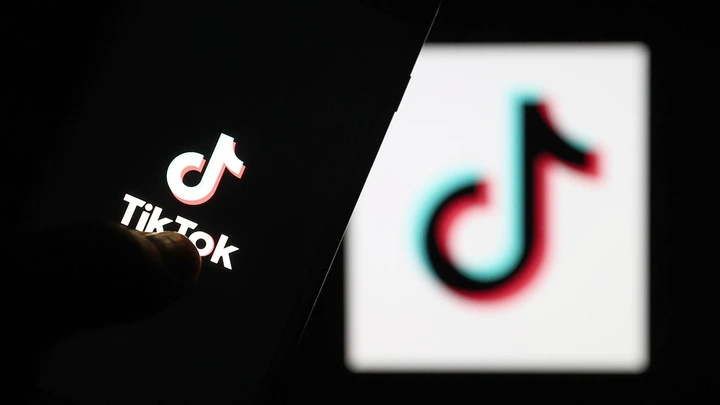According to a source familiar with the talks, the platform is considering various possibilities for its future.

View pictures in App save up to 80% data.
TikTok is preparing to potentially make the app unavailable to its 170 million American users on Sunday, the same day a U.S. ban is set to go into effect, according to a person with knowledge of the company’s planning who spoke with NBC News.
In April, President Joe Biden signed a law mandating that TikTok must sever its ties with Chinese ownership and transfer its assets to an American company, or face closure. Should the Supreme Court rule the law unconstitutional prior to that, TikTok will be allowed to operate in its current form.
However, a definitive decision has yet to be reached by TikTok regarding potential outcomes if the Supreme Court rules unfavorably for the company. This information comes from an individual familiar with the talks, who requested to remain anonymous due to lack of authorization to speak publicly. The person indicated that discussions — comprising phone calls and meetings — were still in progress as of Wednesday afternoon.
A Tuesday report from The Information said if the justices uphold the law, the app will go dark rather than allow people already on the app to continue using it, citing two unnamed sources it said were familiar with TikTok’s plans.
An alternative being considered, as mentioned by a source who spoke with NBC News, is that existing TikTok content could remain accessible to users who already have the app installed, even though it would cease to receive updates. However, the app would no longer be available for new downloads in U.S. app stores, and its functionality would diminish over time due to the lack of bug fixes and updates.
According to CNBC, the Chinese social media application REDNote has risen to the top of Apple's app store, highlighting worries that TikTok may soon face a complete ban in the United States.
Noel Francisco, an attorney for TikTok, told the Supreme Court on Friday that to his understanding the app would “go dark” on Jan. 19 if the company lost the case. “Essentially, the platform shuts down,” Francisco said.
This is what occurred in India when TikTok was prohibited on June 29, 2020. Nikhil Pahwa, the founder of the tech policy outlet MediaNama in India, informed NBC News that the application ceased operations on the evening the ban took effect.
“By the next morning, we discovered that TikTok was no longer accessible,” Pahwa remarked. “The impact was instant. One evening, access was simply severed. Users were left without options, and brands that were promoting on TikTok found themselves without a platform.”
When Americans travel to India and try to access the TikTok app on their devices, they receive a message stating, “Our services are not available in your country or region.” According to Pahwa, Indian users also face issues, as the mobile app is non-functional, and attempting to open a TikTok link on a desktop leads to a basic page indicating that the app has been discontinued in India.
“At that time, India boasted 200 million internet users, and when the ban was imposed, it caught many by surprise, leaving them uncertain about their next steps,” he explained. “As time passed, Instagram became the platform of choice. Brands shifted their focus there, and users began establishing their profiles. However, numerous users struggled to replicate the success they experienced on TikTok.”
Within two months of the TikTok ban in India, Instagram rolled out its TikTok competitor Reels and YouTube released its competitor Shorts. They are also the primary alternative platforms for short-form video content in the U.S., although Americans have flocked to a Chinese app called RedNote in recent days, pushing it to the top of Apple’s App Store. India has banned almost 500 Chinese apps so far, Pahwa said. He said he is unable to access TikTok with a virtual private network or VPN, which has been floated as a way to get around the ban by some U.S. users.
TikTok has evolved beyond a mere entertainment platform; it has become a lucrative avenue for many users. Some individuals have turned TikTok into full-time careers, while businesses leverage the app for their marketing strategies. The future of the platform—whether it faces an abrupt shutdown or continues to function but gradually declines—will significantly influence how both creators and brands engage with it.
Will Trowbridge, the CEO of the creative agency Saylor, collaborates with clients such as the Walt Disney Company to create content for TikTok. Saylor has also partnered with NBCUniversal, the parent company of NBC News. Trowbridge mentioned that even if TikTok remains accessible on devices where the app is already installed after January 19, at least one of his clients has decided against posting further. There are concerns among some clients that the app might face increased security vulnerabilities, such as hacking, if it cannot receive updates or ongoing support.
“They're halting their efforts because they prefer to avoid any potential risks, and they want to distance themselves from the app's downward trend,” Trowbridge remarked. “Each party has their own strategy in place. However, they are hesitant to discuss it, as confronting the implications of the situation is daunting.”